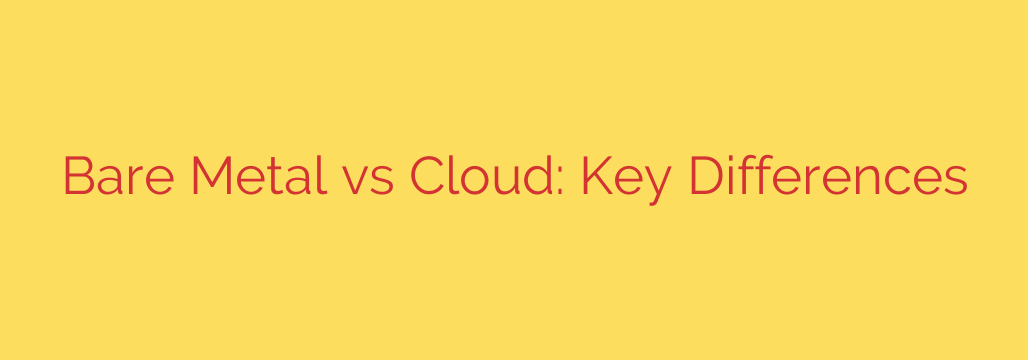
Choosing the right infrastructure for your business applications is a fundamental decision, often boiling down to a comparison between using dedicated hardware and leveraging virtualized cloud environments. Each approach offers distinct advantages and caters to different needs, impacting performance, control, cost, and scalability.
Bare metal servers represent the traditional approach: physical servers provisioned for exclusive use by a single tenant. There is no layer of virtualization between the operating system or applications and the underlying physical hardware. This provides maximum performance and direct access to all server resources, making it ideal for demanding workloads that require consistent, high throughput and low latency, such as large databases, high-performance computing (HPC), or specific compliance requirements where physical isolation is mandated. With bare metal, you gain granular control over the hardware configuration, operating system, and software stack. However, this level of control also means you are responsible for managing, maintaining, and scaling the physical infrastructure, which can be resource-intensive and less agile than cloud alternatives. Cost can be a significant factor; while potentially more cost-effective for consistently high utilization, the initial investment and ongoing operational expenses can be substantial. Scaling requires procuring and setting up new physical servers, which is a much slower process.
In contrast, cloud computing relies heavily on virtualization, allowing multiple users to share the underlying physical infrastructure as abstracted virtual machines or containers. Resources like CPU, memory, storage, and networking are provisioned on demand from a shared pool. The most prominent models are public cloud, where resources are offered by third-party providers over the internet, and private cloud, where an organization builds and manages its own cloud infrastructure. Cloud offers unparalleled scalability and flexibility, allowing businesses to quickly adjust resources up or down based on demand and pay only for what they use (often referred to as an OpEx model). This agility is crucial for variable workloads, web applications with unpredictable traffic, and development/testing environments. While performance in a shared environment can sometimes be subject to the “noisy neighbor” effect, providers often offer options for higher performance or dedicated instances within the cloud structure. Management overhead for the underlying infrastructure is significantly reduced as the provider handles hardware maintenance, patching, and many aspects of security and networking. Control is focused on the operating system and application layers rather than the physical hardware.
The key differences lie in the trade-offs: Bare metal offers ultimate performance and control through dedicated resources but demands more management effort and lacks inherent scalability and flexibility. Cloud provides immense agility, ease of management, and elastic scalability through shared, virtualized resources, often with a pay-as-you-go cost structure, though with slightly less granular control over the physical layer and potential performance variability. Many organizations adopt a hybrid cloud strategy, combining both bare metal and cloud resources to leverage the strengths of each approach for different types of workloads. The optimal choice depends entirely on your specific application requirements, performance needs, budget constraints, scalability demands, and internal IT management capabilities.
Source: https://www.redswitches.com/blog/bare-metal-server-vs-cloud-key-differences-explained/








